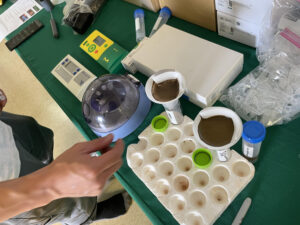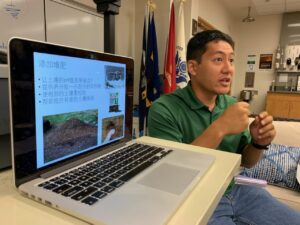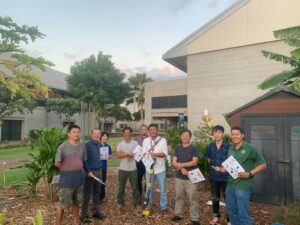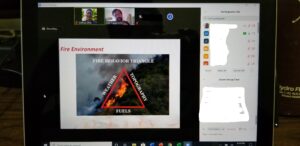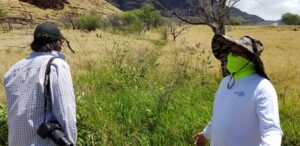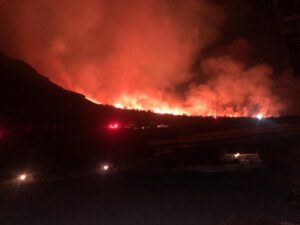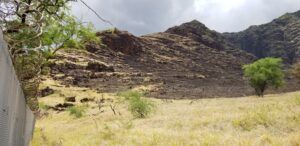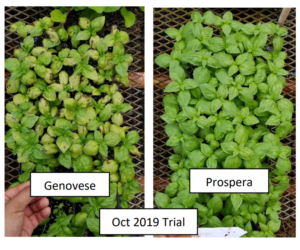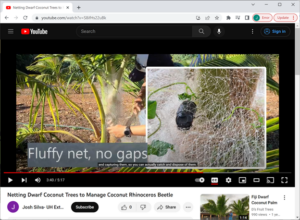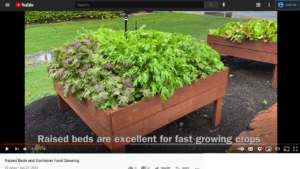Final report for WPDP19-21
Project Information
Hawaii is the most geographically isolated population on the planet which relies on 85-90% of imports for food (S/H DBED, 2012). Ninety-five percent of farms in Hawaii are small family farms (USDA NASS, 2012). This PDP proposal aims to increase food self-sufficiency and security in the Hawaiian islands by forming a consortium between the University of Hawaii, College of Tropical Agriculture and Human Resources (UH CTAHR) Cooperative Extension and Sustainable and Organic Agriculture Program (SOAP) with state agencies, new farmers’ training programs, farmer’s unions, community colleges’ ag programs, and other essential public and private organizations to develop educational programs that support a “Together We Farm” movement initiated by West Oahu Soil &Water Conservation District (SWCD).
Our specific objectives are:
- Increasing farmer awareness of sustainable agricultural practices that promote soil and water conservation through collaboration with traditionally under represented farm communities across Hawaii,
- Empowering Hawaii’s rural farm communities through the hands-on teaching demonstration method (train the trainer’s approach) and becoming active information seekers, and
- Examine the regional, economic, social, and environmental implications of adopting sustainable agriculture practices and systems.
We anticipate providing agricultural professionals and producers with the technologies, skills and competencies to increase on farm productivity and efficiency; practice responsible farming by safeguarding human health, reducing chemical inputs, enhancing on farm biological and natural resources, recycling local waste as farm inputs; become active information seekers and transformational leaders; and improve the overall quality of life of Hawaii’s farmers and agricultural communities through education, outreach, and applied local research.
We will maximize the limited resources available for agricultural professional development training in Hawaii while building long-term trusting relationships and heightening competencies.
Specific objectives to achieve all WSARE goals
1. Increase farmer awareness of sustainable agricultural practices that promote soil and water conservation through collaboration with traditionally under represented farm communities across Hawaii.
- Identify key under represented farm communities across Hawaii with multiagency collaboration and support
- Work with community agricultural leaders to boost sustainable agriculture education.
- Strengthen partnerships with local teams of extension agents and NRCS staff which will allow SOAP to reach more stakeholders and increase awareness of sustainable agriculture practices.
- Design, deliver and evaluate in-depth training on priority sustainable agricultural topics based on the needs of those who service and farm in these agricultural communities.
- Develop simple, yet science-based presentations in lay terms with heavy visuals (translated if necessary) to increase and reinforce sustainable agricultural concepts.
- Transfer new technologies to address priority need areas for agricultural professionals.
- Engage and involve agricultural leaders into our program design, implementation and evaluation
2. Strengthen the viability of Hawaii rural farm communities through hands-on teaching demonstration
- Strengthen established relationships.
- Incorporate the hands-on teaching demonstration technique into programming to build confidence and competency in our staff and community leaders.
- Develop workshops, field days, farm tours and round table discussions on subjects on responsible farming, reduced risk edible commodities, environmental stewardship, food self-sufficiency, etc.
3. Examine the regional, economic, social, and environmental implications of adopting sustainable agriculture practices and systems.
- Track the level of adoption of producers in sustainable agricultural practices and note changes in knowledge, skill, and adoption.
Agriculture in Hawaii that was once dominated by the sugar and pineapple plantation industries has shifted towards a diversified agricultural system. Currently, 63% of farms in Hawaii are < 10 acres with 88% of total farms farming on < 50 acres, with less than $50K in annual sales. Ninety-five percent of Hawaii’s farms are considered small family farms (USDA NASS, 2012). New, beginning and Asian immigrant farmers enter Hawaii’s agriculture industry with little to no experience in sustainable and legally compliant crop production (Sugano et.al, 2013). Experienced farmers from outside the US have a lack of trust in government programs, and need to stay close to their rural farming areas. They are often under-represented. Most critically, these farmers are challenged by new government regulations on pesticide drift, food safety, farm dwelling, worker protection, etc.
A change in Hawaii’s agriculture industry has prompted a need to increase awareness about the environmental and economic impacts of efficient and sustainable agricultural practices. To be successful we must engage and earn the trust of non-traditional stakeholders, especially those who with limited resources or are socially disadvantaged (e.g., Asian American and Pacific Islander, and Native Hawaiians and their respective crop advisors).
Our team is largely composed of members from SOAP at UH CTAHR. We are committed to fulfilling the Land Grant University mission of instruction, scientific research, and outreach. CTAHR utilizes the human resources of statewide Extension agents, collaborative partnerships, and various forms of traditional and distance education technologies to transfer research and technology discoveries that can better prepare farmers’ ability to deal with the many facets of crop production. Our goal is such that they can choose and utilize specific technology and practices best suited to meet their diverse needs. Fortunately, new farm coaches are being recruited statewide into the UH GoFarm Hawaii Program, a new farmer training program aimed at increasing commercial farmers in Hawaii. In 2018, Hawaii State legislature passed a bill for CTAHR to recruit 10 new tenure track extension positions, two of which are dedicated to promote sustainable agriculture. Therefore, it is most timely now for SOAP to develop a Professional Development Program to “Train the Trainers”.
A needs assessment of agricultural professionals revealed that additional in-service educational trainings opportunities are needed in the following priority areas: pest management, produce quality, creating educational video, accessing social media to reach clientele, ag technology, cost of production, post-harvest quality, plant nutrition and soil fertility, distance education, cultivar selection, etc. (2018 SOAP Needs Assessment). We anticipate utilizing a collaborative approach to increase knowledge and competencies within agricultural professionals and stakeholders across the state via implementation of grass roots methods targeted at reaching nontraditional and under-represented clientele of Cooperative Extension in Hawaii.
Cooperators
- (Educator)
- (Educator)
- (Researcher)
- (Educator)
- (Educator)
- (Educator)
- (Researcher)
- (Educator)
- (Educator)
Education
The Sustainable and Organic Agriculture Program is a team of Cooperative Extension agents and specialists with an established network of government and industry partners. SOAP has established a solid reputation for delivering timely, useful, quality outreach and education to Hawaii’s producers. However, many growers in Hawaii still remain underserved, including beginning farmers. There is a need to expand SOAP’s contacts both within current targeted communities, and into new farmers in underserved areas.
In early 2020, we initiated the development of the statewide train-the-trainer curriculum with emphasis on visual or hands on activities related to sustainable agriculture. However, due to the COVID-19 pandemic, our educational outreach was halted, shifting educational approaches to include digital and virtual methods during the pandemic. To address the sustainable agriculture needs of established and emerging farmers, our educational outreach also included digital forms such as webinars and publications, with some hands-on demonstrations being included as state COVID-19 regulations allowed.
Education & Outreach Initiatives
Enhance the educational capacity and impact of University of Hawaii (UH) Cooperative Extension agents through specialized hands-on training and current field technologies
UH Cooperative Extension is an integral component to Hawaii agriculture, often times being the first ones contacted by growers experiencing plant issues. Cooperative Extension agents assist growers in solving their plant problems through proper diagnosis and effective recommendations grounded in current science. Updated trainings for extension agents is critical to serving agricultural stakeholders effectively as new problems arise.
SOIL FERTILITY & HEALTH TRAINING
PI Silva organized a statewide training of extension faculty on basics of soil fertility and soil health (Oct 26, 2022), which are two priority topics identified by faculty in an internal needs assessment. Agents (n=15) were trained on Hawaii soil diversity, plant nutrients, soil collection and testing, fertilizer types, and also field tests agents could do at farms or their own trainings for soil nitrate, Solvita CO2 burst, and wet aggregate stability (See Information Products). Each county of agents was also given a Soil Education Kit to conduct their own soil fertility and health trainings. The Kit included a RQ-Flex 20 spectrometer, soil nitrate test strips, mini-centrifuge and tubes, Solvita CO2 burst kit, wet aggregate stability kit, and an IFA World Fertilizer Use Manual.
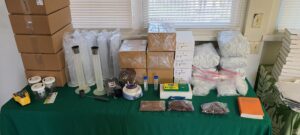
AGPRO: PLANT DISEASE DIAGNOSIS TRAINING
PI Silva partnered with local agents to host an AgPro Professional Development training for UH extension faculty on plant disease diagnosis (Oct 13, 2022). Extension faculty (n=18) learned of the primary plant disease types, routes of infection, and common disease symptoms and terminology. Faculty also learned how to use Agdia test strips and how to diagnosis symptoms using a stereo microscope, which they also took back to their respective offices for future use assisting their stakeholders.

Learning, Action outcomes:
- For the Soil Training, all extension faculty indicated an increase in their knowledge regarding soil fertility and health, with at least 55% being "A lot" and 45% being "Somewhat." 90% rated the training as "Excellent," and 64% responded that they will utilize at least 2 or more things learned in their own extension programs.
- For the Plant Disease Training, 64% rated it as "Excellent" in terms of its usefulness and practical information, and 93% having advanced in their understanding of Plant Pathology, Plant Disease Diagnosis, Microscopy from attending. Similarly, 93% indicated that they can utilize the information gained in their own educational outreach efforts,
Impact: These soil and plant disease trainings reached extension faculty statewide. The tools and kits provided to them improved their capacity to conduct these types of trainings and services for their own stakeholders. In fact, from the Soil Training, 82% of attendees found the most useful portion to be the Soil Education Kit and associated field test demonstrations they can conduct.
Enhance the quality and productivity of soil by conserving natural resources while improving the quality of our surface and ground water.
Limited land availability, repetitive mono-cropping and the lack of organic matter replenishment have resulted in nutrient depletion in many Hawaii soils. For an island state, fertilizer applications and soil health must be monitored regularly to minimize erosion, nutrient leach, and ground water and ocean contamination. Increased education of these issues is critical to sustain our island resources.
SOIL NUTRITION AND HEALTH
- PI Silva and Co-PI Wang have partnered with GoFarm Hawaii to give reoccurring lectures on multiple islands (Hilo, Oahu, Kauai) to their beginning farmers on soil fertility, soil health, and agroecosystem biodiversity through cover cropping and crop rotation (2020-2022). GoFarm Waimanalo and the PI Silva also hosted a soil workshop similar to the Train-the-Trainer one for their beginning and alumni farmers (Dec 14, 2022; n=17).
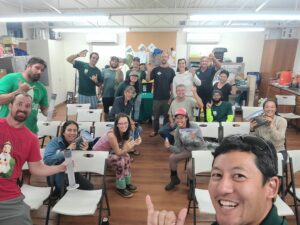
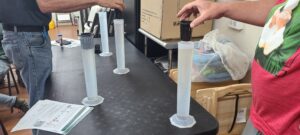
- Other PI Silva and local collaborators have lectured to farmers on Kauai (June 4, 2021), Hawaii Farmers Union United Waianae Chapter (October 27, 2021), and the Hawaii State Energy and Environmental Protection Committee (August 30, 2021) about organic soil amendments, such as feather meal and compost, soil health benefits of adding organic amendments, calculating nitrogen requirements to minimize over application.
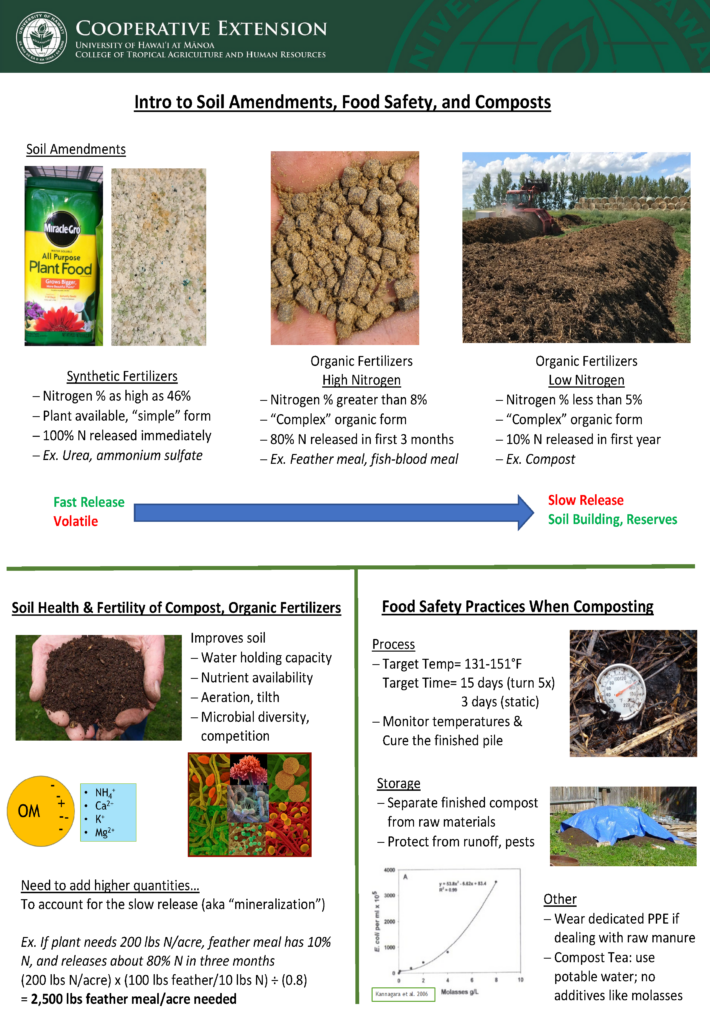
- Prior to COVID-19 restrictions, PI Silva presented soil nutrient management and testing information at co-PI Gorham's “Together We Farm” program workshop on February 4 and 6, 2020, to English- and Chinese Mandarin-speaking farmers. The workshop included both at lecture describing soil pH and nutrient management for Hawaii soils and short-demo on collecting soil samples for testing.
COVER CROPS
- PI Silva and Co-PI Wang created a handout for their cover crop calculator website (https://oahurcd.org/cover-crop-calculator/) and disseminated it at multiple farmer workshops. PI Silva organized a SOAP Field Day (Oct 7, 2022; n= 21) where farmers learned various topics from cover crops, turmeric, mango, and aquaponics. Both also presented the website at a Nov 10 Cover Crop Field Day that also showcased cover crop irrigation research.
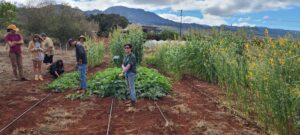
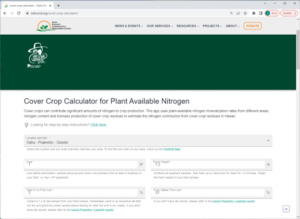
- Co-PI Wang created a YouTube video that demonstrated the benefits of cover crops such as white clover, wheat grass, sunn hemp, and oil radish towards soil infiltration, runoff prevention, and overall soil health. Co-PI Wang has also established several soil conservation projects pertinent for Hawaii agricultural and soil health (https://cms.ctahr.hawaii.edu/wangkh/Research-and-Extension/Soil-Health-Management).
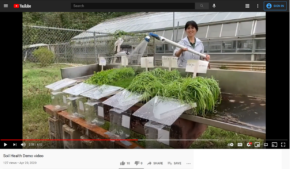
The team also presented at collaborative workshops on the many benefits of cover crops to soil health and nutrition, and also wrote a newsletter article about sunn hemp cover crops. These included the following: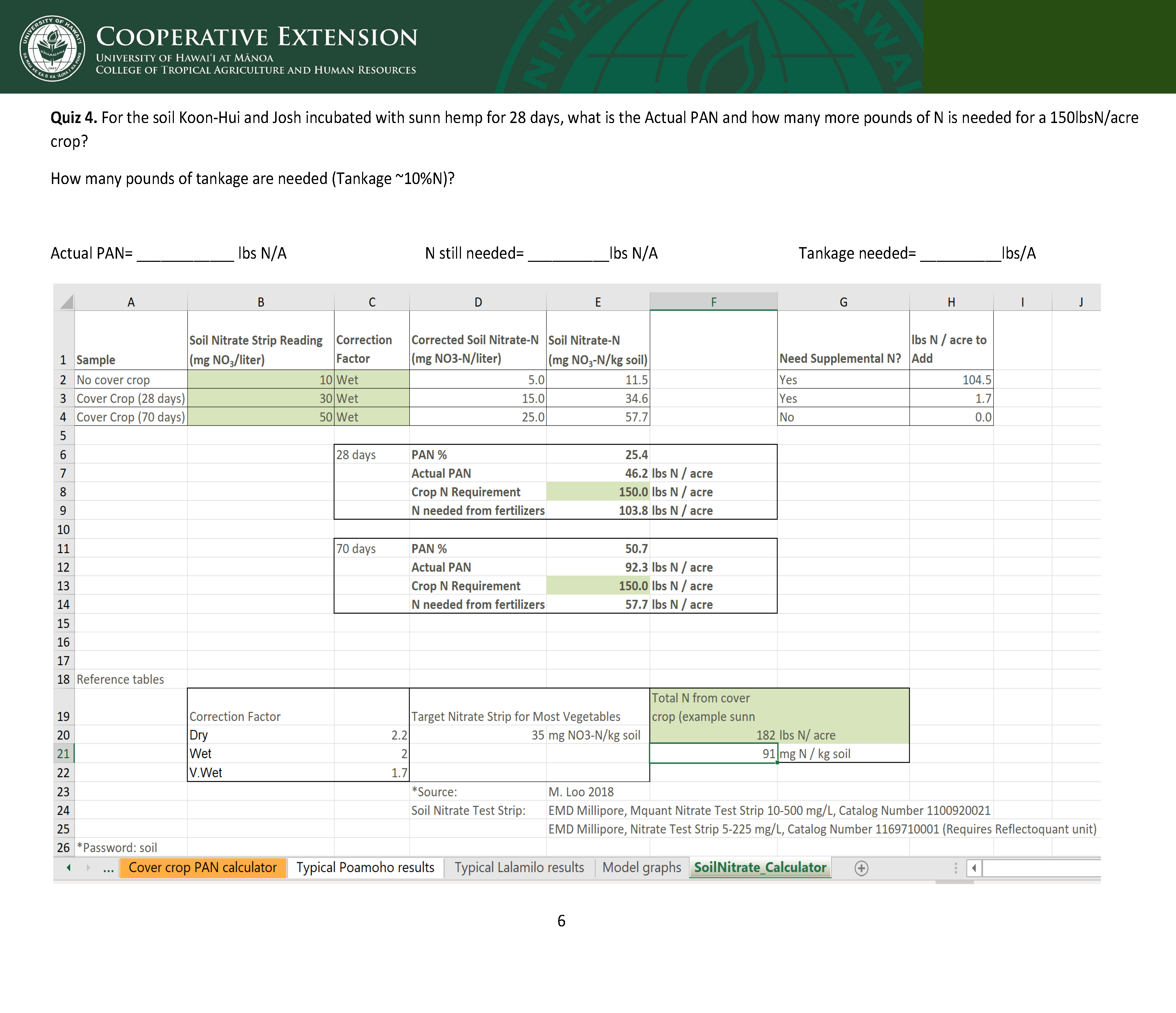
- Sharing of a Cover Crop Calculator at a Women Farmers' Network Soil Health workshop (June 15, 2021), which help farmers calculate nitrogen requirements when using cover crops
- Lecturing to NRCS and local partners via webinar on benefits of cover cropping and conservation tillage in tropical systems (Sept 27-30, 2021)
IRRIGATION
PI Silva also trained GoFarm beginning farmers statewide in basic irrigation management, covering crop water requirements, tools like tensiometers, irrigation types, and general setup (2020-2022).
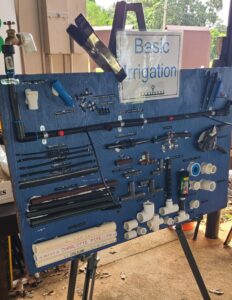
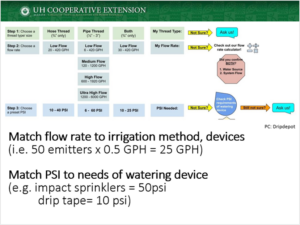
Learning, Action outcomes: Farmers who attended our workshops and trainings learned diverse and current information related to soil nutrition, soil health, irrigation, and benefits of practices like cover cropping. On average, 81% of respondents said they learned "A Lot," with 74% saying they would incorporate at least 2 or more practices taught into their farming operations. These included items such as identifying plant nutrient deficiency symptoms, better soil nitrogen use management, and utilizing cover crop mixes for nematode and weed management.
Impact: More than 300 farmers and beginning farmers were reached statewide through these works, with Co-PI Wang's soil health and cover crop video having 225 views. Through Together-We-Farm's work, we also helped Chinese Mandarin-speaking farming communities. From the information shared, there is potential for increased farmer adoption of sustainable agricultural practices that reduce fertilizer inputs and promote soil and water conservation. As a result of soil nutrition and cover crop outreach, at least cooperating farmers who work regularly with the team have already adopted reducing their fertilizer inputs when cover cropping, and organic farmers have adopted the use of feather meal (12-0-0) to supplement some of their other fertilizers in order to reduce unneeded phosphorus and potassium additions.
Enhance the quality of life of farmers and ranchers and ensure the viability of rural communities.
Small acreage farms are vulnerable to many issues from low wholesale prices and saturated market niches, higher economic risk due to increasing input costs (e.g. land, labor, mechanization), as well as natural disasters (i.e Hurricane Lane). Additionally, government regulations, such as food safety, require farmers to implement specific practices in order to comply and remain viable. Farmers need timely, science-based solutions to resolve their critical needs.
FOOD SAFETY
- PI Silva and collaborators organized a Farm Food Safety Field Day (Dec 7, 2022) that showcased different food safety practices and equipment farmers can use to comply with the Food Safety Modernization Act- Produce Safety Rule (FSMA-PSR), which is a mandatory regulation requiring farmers to comply with farm food safety criteria. Stations included Handwashing, Soil Amendments, Wildlife Management, Agricultural Water, and Postharvest Sanitation. Farmers observed how to install structures like pig fencing and learned how equipment like injectors and foam guns worked. As an early holiday surprise, each farmer attendee received a Food Safety Kit bucket that included test strips, gloves, bird deterrent tape, water container, and GloGerm handwashing tool to strengthen their food safety adoption. Attendees also received one raffle prize like a foam gun or DIY harvest bin sled (See Information Products).
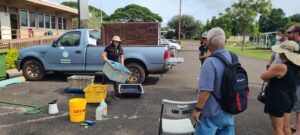
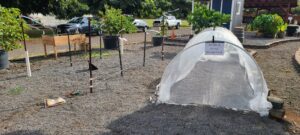
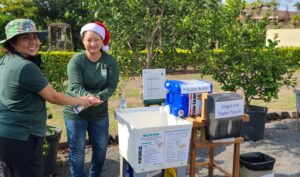
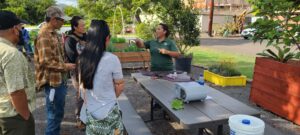
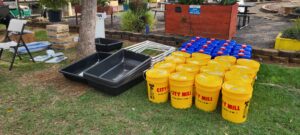

- PI Silva, has also given two food safety lectures to the Hawaii Agriculture Leadership Program (July 7, 2021) and the Pacific Gateway Center (July 14, 2021), the latter who serves Limited English Proficiency farmers. The lectures served as an introduction to the FSMA-PSR
NATURAL DISASTERS
On June 24, 2020, during an anticipated hot summer, PI Silva and a local university fire ecologist hosted a statewide Farm Wildfire Management Webinar where recommendations were shared regarding fuel management, fire break construction, and appropriate processes should a fire occur. Additionally, for a grassroots network of farmers on the high risk side of Oahu island, in-person field visits were conducted to assess their fire readiness, following COVID-19 precautions. The Hawaii Department of Forestry and Wildlife who manage lands in these areas also participated in field visits.
Learning, Action outcomes: From field days and workshops, 51 farmers learned the basics of farm food safety needed for compliance with federal FSMA-PSR regulations, as well as saw simple and efficient techniques and tools that can be used to bolster daily food safety adoption. For the Field Day (n=16), 88% of attendees rated it as "Excellent," 50% learned "A Lot," and 75% learned at least 2 or more things that they planned to incorporate. The most useful topics varied, but included the harvest bin sled, sanitation practices, and water treatment.
With the Farm Wildfire Webinar, participants (n=37) learned of wildfire causes, precautions farmers can take to protect their farm, and recommended actions during a wildfire emergency. At least 67% planned to use at least 2 or more things shared in their operation, which included info on fire breaks and funding opportunities for installing structures.
Impact: The timing of the wildfire webinar was serendipitous, as one week following the webinar a potentially major wildfire occurred in the Waianae valley where the fire readiness efforts occurred. Two years prior, major fires burned 8,800 acres of farm and native forest lands, causing multiple farmers to suffer severe losses. Farmers believed the recommendations and farmer connections made through this webinar saved 1,300 acres and more than one dozen farms and homes from a wildfire catastrophe.
From the farm food safety outreach, both farmer groups better understood the required criteria from the Produce Safety Rule. Farmers understood if certain exemptions were applicable to them, and some farmers reached out further to attend a certified training that we offer, which also satisfies a requirement. As adoption is key to food safety compliance, 75% of farmers at the field day planning to adopt 2 or more practices is progress towards adoption and a safer food system.
Protect the safety of our food systems by reducing chemical use and optimizing alternative controls.
Hawaii’s tropical climate provides an ideal haven for insects and plant diseases. Despite strict quarantine, new, economically destructive pests enter into Hawaii every year. Educators on the project team continue to explore integrated management strategies for these pests and diseases.
GENERAL IPM
- PI Silva, co-PI Wang and collaborators organized an IPM workshop for growers (Dec 8, 2022; n=22) that included displays and demonstrations for controlling ant pests with water storage crystal baiting methods; sweet potatoes pest and disease IPM quizzes; physical and screen controls for bird and fruit fly control; and slug and snail controls like copper tape and "Slug Jugs."



- A webinar was organized to address green onion growers issues of thrip and leafminer management (July 27, 2021). A pesticide rotation schedule was shared that included monthly rotations of 11 different insecticides.
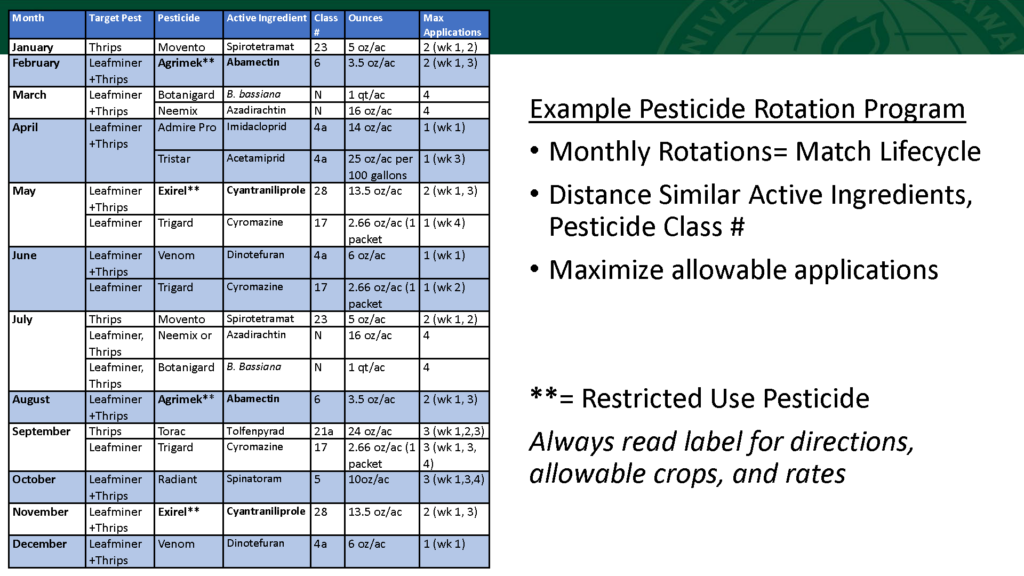
- Three Hanai `Ai articles on local IPM issues published by project educators during 2020 included bagrada bug management, basil variety trials screening for downy mildew resistance, and using bags to prevent bird and fruit fly damage on guava (Hanai `Ai Vol 39). These articles described appropriate techniques or varieties to manage their respective pest and disease issues utilizing minimal or pesticide free methods.
- Co-PI Wang conducted two presentations on Hawaii-based Integrated Pest Management and three presentations on sustainable nematode management to the GoFarm Hawaii cohorts (March 24, October 21, Nov 10, 2021) and NRCS staff for soil health and conservation trainings (June 17, July 27, 2021).
COCONUT RHINOCEROS BEETLE
- Coconut Rhinoceros Beetle (CRB) is a new pest to Oahu, but has really spread across the island in 2022. PI Silva created a YouTube video to teach a physical method of using net to control CRB from damaging low-bearing coconut trees (https://www.youtube.com/watch?v=S8ifHs22uBk).
- At an Arbor Day tree giveaway (Nov 5 2022) organized by cooperator Radovich, netting kits and a link to the YouTube video were distributed to local growers as they picked up their low-bearing coconut trees. Approximately 150 growers attended that event.
Learning, Action outcomes: 215 growers (commercial, subsistence, and beginning) and 110 NRCS staff received training on training on IPM concepts regarding common plant pests and diseases, sustainable nematode management, CRB management, and pesticide rotation programs. 76 people viewed PI Silva's CRB netting YouTube video.
Impact: 4 of the 7 commercial green onion farmers expressed their adoption of the thrip pesticide rotation schedule. The GoFarm farmers trained are now better equipped to manage tropical pests and diseases on the farm, which is the number one issue Hawai`i farmers contact UH Cooperative Extension. Hanai `Ai newsletters have a regular viewership of about 1,800 farmers, growers, and agricultural professionals. For growers who view these articles and incorporate the recommended practices, crop loss and pesticide use are expected to be minimal and efficient. About 6 basil growers across the state, for example, have already expressed their adoption of new, downy-mildew-resistant varieties into their operations, which will hopefully minimize the need for fungicide applications.
Promote crop and enterprise diversification and community self-sufficiency.
Hawaii State Departments of Agriculture, Business and Economic Development and the Office of the Governor are urging the promotion of community resiliency and self-sufficiency. In the event of a natural disaster like Hurricane Lane, only a weeks’ worth of food is available on the island to sustain over 2 million people, residents and visitors. The need for local food and locally derived agricultural inputs became more apparent during the COVID-19 pandemic, with shipping issues limiting agrochemical and seed availability and many Hawaii residents creating gardens to supplement their food needs.
SEED SAVING
- PI Silva and cooperators organized a Seed Saving Workshop (Oct 1, 2022) for local growers. Topics covered included pollination, seed harvesting, wet- and dry-processing methods, storage, and germination testing. Attendees were also allowed to take any seed materials in the field, processed seed from the University of Hawaii, as well as seed storage materials (glass jars, desiccant, and humidity cards).


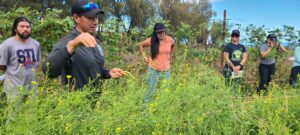
COMMUNITY GARDEN NEEDS
- To address and bolster this crop production need in the state, co-PI Sugano, PI Silva, and project educators installed raised bed gardens and static hydroponic systems at the Pearl City Urban Garden Center, which is a university research station that educates both the farming and home garden communities. In addition, they created two educational videos on the benefits, inputs, and recommended practices for these two simple systems that can help both home gardens and some small farms increase their crop production.
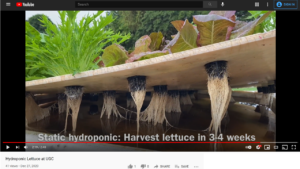
LOCALLY DEVELOPED INPUTS
- Compost is a readily available, locally made product that has numerous soil health benefits. To promote the use of compost, both plant-derived and vermicompost, Silva, Wang, and collaborators organized an in-person workshop (June 30, 2021). The workshop included vermicaste stations, compost tea brewing, Solvita microbial respiration testing, and compost giveaways by Hawaiian Earth Products. A similar workshop was conducted on Kauai in collaboration with Oahu Resources Conservation and Development Council (June 4, 2021) that included compost tea brewing, compost making using carbon:nitrogen ratios of ingredients, and touring a local composting facility.
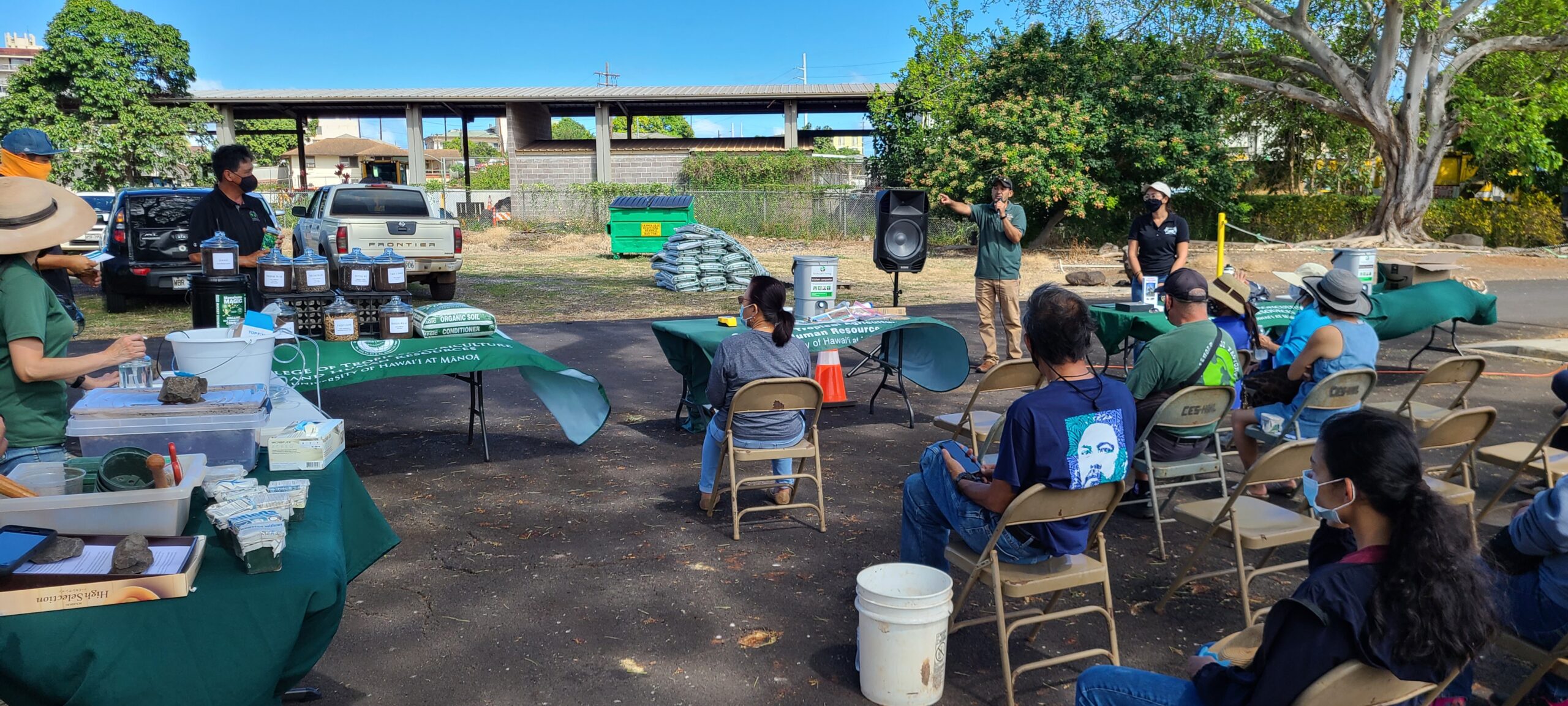
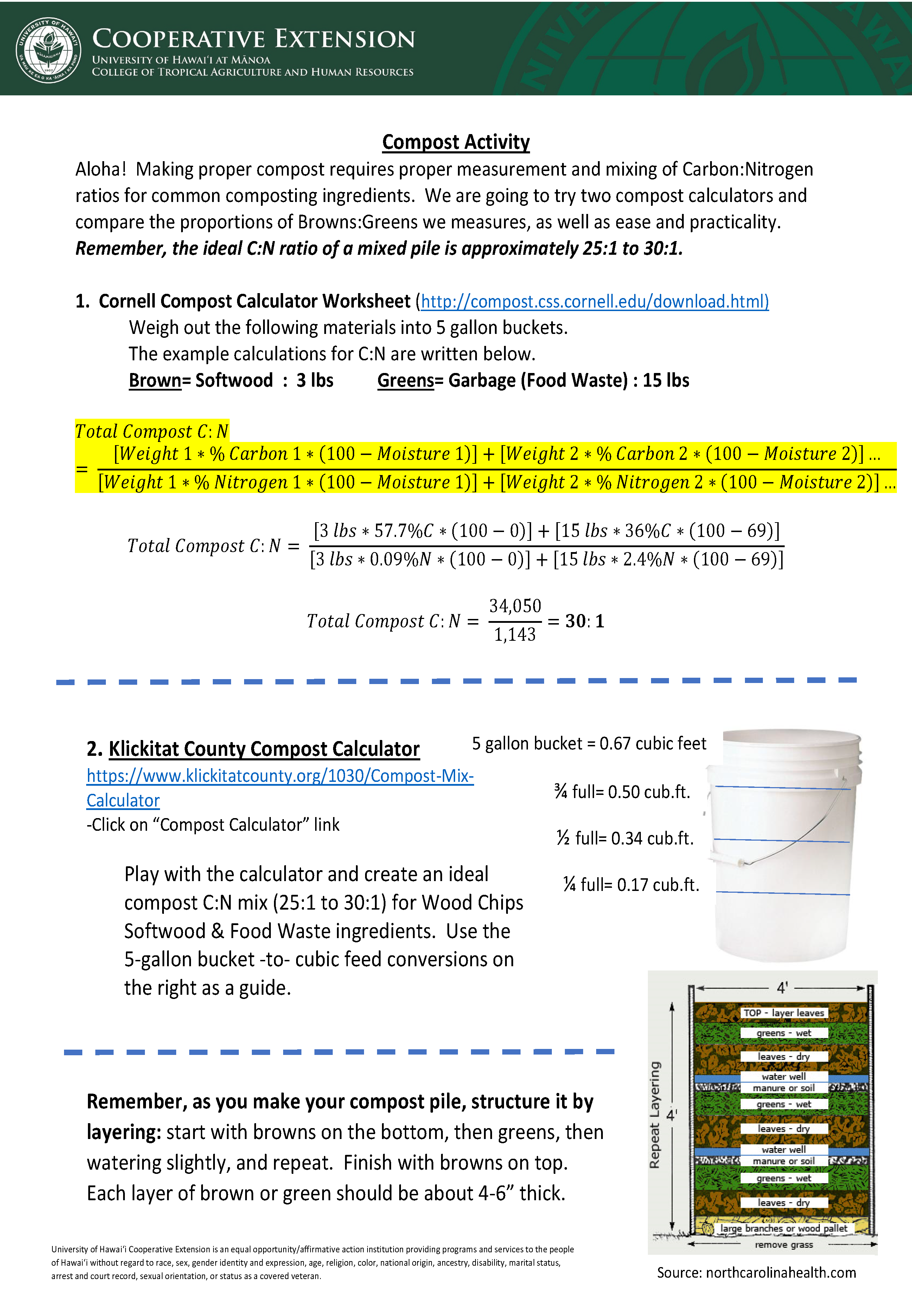
CROP DIVERSIFICATION
Also, crop variety trials for the purposes of import replacement or new crop enterprise potential were conducted at the Urban Garden Center in Oct-Dec 2020. Crops included Japanese shishito and sweet peppers and green bunching onions. The green bunching onion data was presented along with thrip and leafminer management information (July 27, 2021). Some of the top performing varieties included SSR-BO-14, Parade, and Koba varieties.

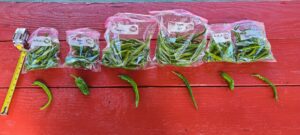
Learning, Action outcomes: 18 growers at the Seed Saving Workshop learned the complete process of seed saving and production. 85% of attendees both rated the workshop as "Excellent" and learned "A Lot," with 77% expressing plans to use at least 5 or more things in their own seed saving operations including dry and wet processing and storage techniques. Raised Bed and Static Hydroponic videos currently have 35 and 72 views, respectively. Compost workshops consisted of 14 growers on Oahu and 24 on Kauai. Information shared for these and crop variety trials will allow farmers and growers to make informed decisions regarding application and use of compost products, these crop trialed, and growing systems.
Impact: 3 commercial green onion farmers are currently growing the varieties presented in the webinar, stating that they favor the varieties' improved weight, firmness, and ease of harvesting that saves in labor costs. Growers who attended the compost workshops likely gained a better understanding of their local products and will incorporate them into their operations. From the Oahu workshop, at least the 14 attendees received compost product with which to assess the quality and performance themselves.
Educational & Outreach Activities
Participation summary:
Learning Outcomes
Project Outcomes
Through field days, virtual and in-person trainings, educational videos, and other outreach materials, our project has directly serviced at least 1,184 farmers, growers, and agricultural professionals.

